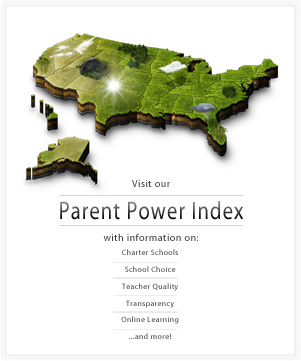A Primer List On How Digital Learning Is Boosting Achievement
(from WiredAcademic)
This post (“How Digital Learning Is Boosting Achievement”) by Tom Vander Ark originally appeared on GettingSmart.com
A reader commented that he wanted to get on board with digital learning but had been told there wasn’t much evidence of links to achievement. That’s dead wrong.
There are hundreds of solid pieces of evidence about digital learning. It’s true that investments to put 10 million computers in American schools did little to move the achievement needle in aggregate but that’s because it was layered on top of (or as Innosight would say, crammed into) the existing batch-print model of schooling. The same can be said for doubling staffing ratios over the last thrity years.
The potential of personalized learning technology—as evidenced in the military, gaming, corporate training, and informal learning—suggest the potential going forward is much greater that what we’ve seen to date. When technology is used to extend, personalize and transform learning, it makes a world of difference.
Following are a few dozen studies that demonstrate the promise of digital learning. The list of evidence above is is by no means an exhaustive. There are over a dozen academic journals dedicated to online learning research. We’d welcome your additions or favorite sources.
1. Blended schools achieve high performance:
- Mooresville, NC has seen an improvement of 20 percentage points—from 68 percent to 88 percent—in the portion of its students who scored “proficient” on all core-subject state exams, in the subjects of reading, math, and science in the four years since its conversion to a 1-to-1 laptop program.
- Rocketship Education elementary schools are top performing low-income schools in California in part because of a two hour computer learning lab.
- Carpe Diem is a rotation model blended high school, and a top math performer in Arizona.
- KIPP Empower: 95% of kindergartners scored at or above national in math and 96% in reading, while only 9% arrived kindergarten-ready.
- AdvancePath: 90% enrolling in the blended learning dropout prevention network are likely to earn their high school diploma.
- Robert A. Taft Information Technology High School, Cincinnati, was converted to a technology-focused school and saw graduation rates skyrocket from about 21% to more than 95%.
2. Hundreds of studies of online and blended learning show efficacy:
- The U.S. Department of Education’s Evaluation of Evidence-Based Practices in Online Learning: A Meta-Analysis and Review of Online Learning Studies of more than 40 studies found that (mostly higher ed) “students who took all or part of their classes online performed better, on average, than those taking the same course through traditional face-to-face instruction.”
- iNACOL’s Summary of Research on the Effectiveness of K-12 Online Learning provides a full review of literature as well as thoughts on the future of online learning research.
- Project RED data found that the use of technology-based interventions for English-language learners, struggling readers, and students in special education were the top predictors of improved high-stakes-test scores, dropout-rate reduction, and course completion.
- A comprehensive evaluation concluded that Florida Virtual School students outperformed their counterparts in Florida’s traditional middle and high schools on such measures as grades, Advanced Placement scores and FCAT scores.
- A recent Summative Meta-Analysis and Trend Examination found that online learning (mostly higher ed) produced better results than face-to-face courses—and the gap is widening as technology improves. See Q&A: Mickey Shachar On Traditional vs. Distance Learning.
- Study Finds AR Virtual Academy Students Outperform Public School Students
- A study by the National Survey of Student Engagement reported that the online-learning experience yielded deeper use of “higher-order thinking, integrative learning, and reflective learning.”
3. Technology-enable math products have boosted achievement:
- ST Math, a visual game-based approach have demonstrated results at scale in more than 1200 elementary schools nationwide.
- Dreambox used at Rocketship has been highly effective.
- Go Know boosted 5th grade math proficiency by 20 points in mobile learning trial in Katy, Texas
- Reasoning Mind helped 100% of 2nd graders in Compton to score at the proficient or advanced level.
- Interactive Learning Online at Public Universities: Evidence from Randomized Trials showed that a blended statistics class provided a rapid and economical pathways to mastery.
4. Digital learning offers the only path to boosting achievement in this “decade of deficits”:
- In Digital Learning Imperative, the Alliance for Excellent Education first made the case that digital learning was the only solution to the achievement gap, the fiscal gap, and the effective teacher gap.
- A recent U.S. Department of Education Study outlined nine ways that online learning can boost productivity.
- The Florida Tax Watch evaluation of Florida Virtual School found, in addition to student achievement gains, that FLVS is “a bargain for Florida taxpayers. Largely because it has no expenses related to transportation or construction and maintenance of physical facilities, FLVS is able to offer computer-delivered instruction at a lower per-student cost than traditional schools.”
Digital learning will boost the percentage of US students that graduate ready for college and careers. Internationally, the digital learning revolution offers the first opportunity in history to extend quality secondary to every young person on the planet.
Venture investor Ram Shriram in a recent interview said, “There is an important change that is finally happening [in K-12] thanks to broadband ,…tablets, and the kinds of things we are building in the Cloud…these things finally allow for democratization of knowledge. We can have each child learn at his or her own pace. It allows us to spread the best teachers, and best methods everywhere. We can lower the cost of education for those who are less able to afford it.”











